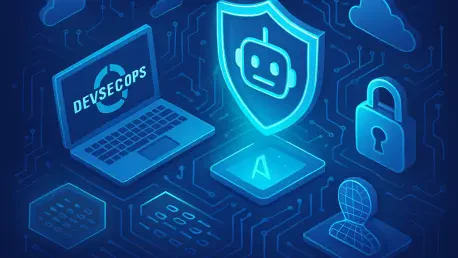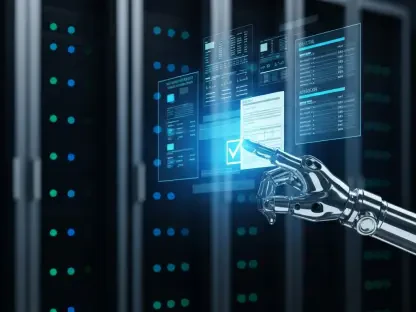In an era where cyber threats are becoming increasingly sophisticated and the rapid adoption of AI-generated code introduces unforeseen vulnerabilities, the technology industry is witnessing a pivotal shift toward integrating security directly into development processes. Harness Inc., a frontrunner in software delivery solutions, has taken a significant step forward by acquiring Qwiet AI, a company renowned for its advanced vulnerability detection capabilities. This strategic acquisition aims to embed cutting-edge security tools into Harness’ DevOps workflows, creating a seamless DevSecOps platform that addresses modern software challenges. As organizations grapple with the dual demands of speed and safety in software development, this move promises to redefine how security is approached, ensuring that vulnerabilities are caught and resolved early in the lifecycle. By merging Harness’ expertise in streamlined delivery with Qwiet AI’s AI-powered security innovations, a new standard for efficiency and protection emerges in the tech landscape.
Unveiling the Strengths of Harness and Qwiet AI
Harness Inc. has established itself as a leader in the software delivery arena, providing a continuous delivery platform driven by artificial intelligence. This platform empowers DevOps teams to automate code deployment, streamline integration tasks, and monitor performance metrics with precision. By identifying potential issues before they impact production environments, Harness ensures that software development remains both rapid and reliable. The company’s commitment to simplifying complex workflows has made it a trusted name among developers and operations professionals striving for efficiency. With a focus on cutting through the noise of modern development challenges, Harness has built a reputation for enabling teams to deliver high-quality software at an accelerated pace, setting the stage for further innovation through strategic partnerships and acquisitions.
Qwiet AI, in contrast, brings a specialized edge with its focus on vulnerability detection and remediation through advanced AI tools. Its flagship technology, the Code Property Graph (CPG), offers rapid and accurate code scanning, achieving an impressive 97% true-positive rate while keeping false positives to a minimum. Beyond merely identifying security flaws, Qwiet AI provides verified code fixes, allowing developers to address issues swiftly and with confidence. This capability is crucial in an environment where security threats are constant and evolving. By integrating with Harness, Qwiet AI’s tools are poised to transform how security is woven into the fabric of DevOps, ensuring that developers have access to powerful resources that prioritize both safety and speed. This synergy marks a significant leap toward a more secure software development lifecycle.
Driving the Vision of Integrated DevSecOps
The acquisition of Qwiet AI by Harness centers on a transformative goal: embedding security directly into the DevOps pipeline to create a cohesive DevSecOps environment. Rahul Sood, the newly appointed general manager of security at Harness, has articulated a vision for an AI-native platform where security is not a separate or delayed process but an inherent part of every development stage. This approach tackles the persistent issue of tool sprawl, where developers are bogged down by managing multiple security scanners and solutions that often lead to inefficiencies. By incorporating Qwiet AI’s capabilities natively into Harness’ ecosystem, the resulting platform promises to eliminate fragmentation, allowing teams to address vulnerabilities in real time as they write and deploy code, thereby enhancing the overall workflow without sacrificing momentum.
Moreover, this integration signifies a proactive stance on security, aligning with the industry’s shift toward early intervention in the development process. The combined strengths of Harness and Qwiet AI aim to ensure that security checks are not an afterthought but a fundamental component of every build and deployment cycle. This reduces the risk of vulnerabilities slipping into production, where they can cause significant damage. Developers benefit from a streamlined experience, as the need to switch between disparate tools is minimized, fostering a more focused and productive environment. As cyber threats continue to grow in complexity, this acquisition positions Harness to offer a solution that not only keeps pace with challenges but also anticipates future risks, setting a benchmark for what a unified DevSecOps platform can achieve in safeguarding software integrity.
Tackling the Complexities of Modern Software Risks
One of the most pressing challenges in today’s software landscape is the increasing complexity of security risks, particularly with the proliferation of AI-generated code. Tools such as large language models (LLMs) have democratized application development, enabling even those with limited expertise to create software quickly. However, studies reveal that such tools produce secure code only about 55% of the time, leaving significant room for vulnerabilities to emerge. Harness’ CEO, Jyoti Bansal, emphasizes that unifying security with DevOps workflows ensures that every build, test, and deployment adheres to high safety standards by default. This acquisition addresses these gaps by embedding robust detection mechanisms into the development process, protecting innovation without hindering the speed that modern teams require to stay competitive.
Beyond the risks posed by AI-generated code, the broader landscape of cyber threats demands a more integrated approach to security. With attackers growing more sophisticated, organizations can no longer afford to treat security as a reactive measure applied only after issues arise. The partnership between Harness and Qwiet AI counters this by prioritizing early detection and remediation, ensuring that potential flaws are identified and addressed long before they reach production environments. This not only mitigates the risk of costly breaches but also builds trust in the software delivery process. By focusing on prevention rather than cure, Harness is paving the way for a development culture where security and speed coexist, enabling teams to push boundaries while maintaining a strong defense against evolving digital threats.
Sharpening Focus with Precision and Efficiency
A key advantage of Harness’ acquisition of Qwiet AI lies in the enhanced precision and efficiency it brings to vulnerability management. By merging Qwiet AI’s Code Property Graph with Harness’ Software Delivery Graph, developers gain deeper visibility into code vulnerabilities and runtime behaviors. This powerful combination allows teams to focus on risks that are truly exploitable, rather than wasting effort on irrelevant alerts or false positives. With Qwiet AI’s high accuracy in detection—coupled with automated fix suggestions—manual workloads are significantly reduced. Developers can address critical issues swiftly, freeing up time to concentrate on core creative and operational tasks rather than being bogged down by repetitive security chores.
Additionally, this focus on actionable insights transforms how security is perceived within the development lifecycle. Instead of being seen as a hurdle, security becomes an enabler of smoother workflows through intelligent automation. The integration ensures that only the most relevant data is presented to teams, cutting through the noise that often overwhelms traditional security tools. This clarity empowers developers to make informed decisions quickly, fostering a more agile response to potential threats. As a result, the collaboration between Harness and Qwiet AI not only bolsters protection but also enhances overall productivity, proving that robust security measures can coexist with the fast-paced demands of modern software delivery, ultimately benefiting organizations striving for both innovation and stability.
Aligning with Broader Industry Shifts
The acquisition reflects critical trends shaping the tech and cybersecurity sectors, particularly the move toward DevSecOps, where security is integrated early in the development cycle to prevent issues from escalating to production. As cyber threats become more intricate, organizations face mounting pressure to adopt proactive measures rather than relying on reactive fixes. Harness’ decision to bring Qwiet AI into its fold aligns seamlessly with the “shift-left” philosophy, emphasizing the importance of addressing vulnerabilities during the coding phase. This approach reduces downstream risks and costs, ensuring that software reaches end users with fewer flaws, thereby strengthening trust and reliability in digital products across industries.
Furthermore, the growing reliance on AI to solve complex software challenges is evident in this strategic move. Agentic AI, which autonomously handles tasks and decisions, is becoming a cornerstone of both DevOps and security tools. The combined capabilities of Harness’ AI-driven delivery platform and Qwiet AI’s vulnerability detection exemplify how machine intelligence can elevate precision and scalability. This acquisition signals an industry-wide recognition that AI-native solutions are vital for adapting to an ever-evolving threat landscape. By addressing pain points like tool sprawl and fragmented workflows, Harness is contributing to a future where unified platforms simplify processes, enabling teams to focus on innovation while maintaining robust defenses against cyber risks.
Reflecting on a Strategic Leap Forward
Looking back, Harness’ acquisition of Qwiet AI marked a decisive step toward redefining DevSecOps through the power of AI-driven tools. The integration of Qwiet AI’s precise vulnerability detection with Harness’ streamlined software delivery capabilities created a platform that prioritized both security and efficiency across the development lifecycle. This move responded adeptly to industry demands for early security intervention, tackled the risks of AI-generated code, and addressed inefficiencies caused by fragmented tools. As a forward-looking strategy, it encouraged organizations to adopt similar integrations, fostering a landscape where security was no longer a barrier but a catalyst for innovation. For teams navigating complex cyber threats, the next steps involved leveraging such unified platforms to stay ahead, ensuring that robust protection and rapid development went hand in hand in shaping a safer digital future.









